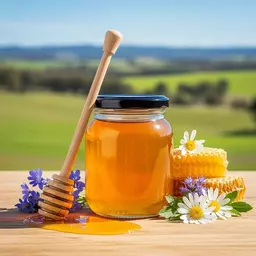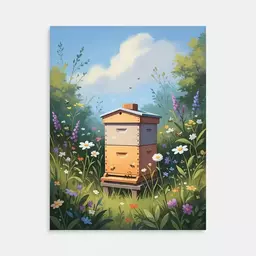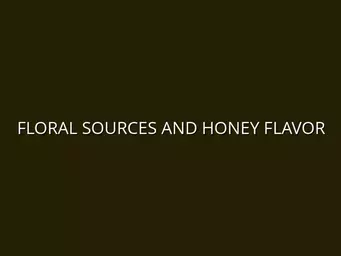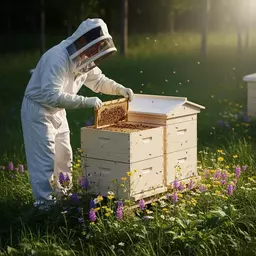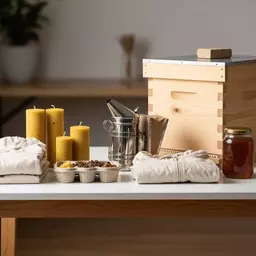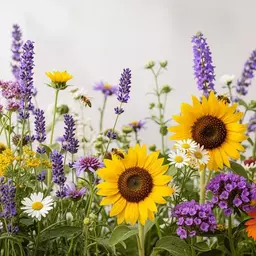Finding Bee-Friendly Seeds in Australia
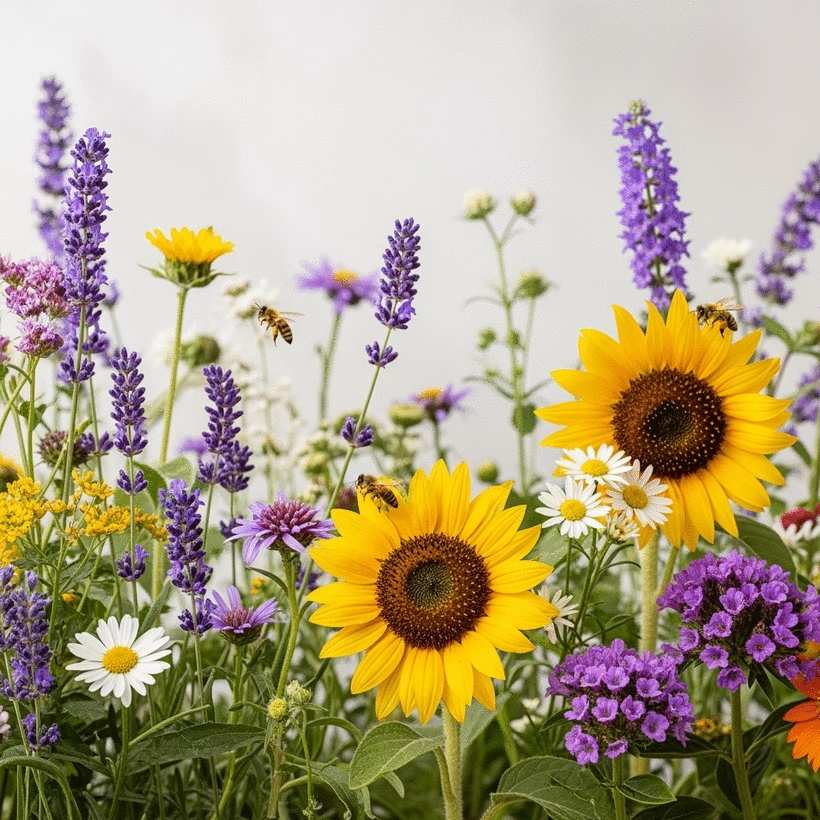
Have you ever wondered how small changes in your garden could lead to big benefits for our buzzing friends? Creating a bee-friendly garden not only supports honey bees but also enriches our entire ecosystem. Let’s explore the essential steps to cultivate a thriving environment for pollinators!
What You Will Learn
- Incorporating a variety of native plants attracts a wider range of pollinators, benefiting your hives.
- Planting bee-friendly seeds and plants helps sustain local bee populations while promoting biodiversity.
- Choosing native plants is crucial as they co-evolve with local bee species, providing essential resources.
- Utilizing pollinator-friendly seed mixes simplifies planting and ensures a diverse range of flowers.
- Attending local gardening workshops can enhance your knowledge and connect you with fellow enthusiasts.
- Supporting certification programs like Bee Friendly Farming® fosters sustainable agricultural practices beneficial for bees.
Key Elements of a Bee-Friendly Garden
Creating a thriving environment for bees involves selecting plants with specific characteristics and understanding their benefits. This visual highlights what makes a plant bee-friendly and the diverse benefits it offers. To learn more about understanding bee behavior in your garden, explore our detailed guide.
What Makes a Plant Bee-Friendly?
- ✓ Brightly colored flowers with open access to nectar.
- ✓ Flowers blooming at different times for continuous food.
- ✓ Native species (co-evolved with local bees).
- ✓ Simple flower structures for easy access.
Benefits of Bee-Friendly Seeds & Plants
- ★ Support Bee Health: Provide essential nutrients (nectar & pollen).
- ★ Enhance Biodiversity: Promote balanced ecosystems.
- ★ Create Habitat: Offer shelter and nesting opportunities.
- ★ Preserve Biodiversity: Protect a wide range of species.
Top Australian Native Plants
- 🌿 Banksia: Dense flower spikes, irresistible to bees.
- 🌿 Grevillea: Tubular flowers, ample nectar for various species.
- 🌿 Bottlebrush: Bright red flowers, attracts many pollinators.
Seed Mixes & Flowering Herbs
- 🌼 Bee Cause Seeds: Curated mix for bee health.
- 🌼 Diggers Club Seed Mixes: Native Australian plants.
- 🌼 Lavender: Fragrant herb, excellent nectar source.
- 🌼 Basil: Culinary herb, also a food source for bees.
Understanding Bee-Friendly Gardens for Your Apiary
Creating a bee-friendly garden is essential for supporting not just honey bees but also the broader ecosystem. These gardens provide vital resources for bees, including food and habitat, which contribute to their health and biodiversity. Without a diverse range of flowering plants, our beloved honey bees struggle to thrive, and this has a ripple effect on the plants that rely on them for pollination. Let's dive into the wonderful world of bee-friendly plants!
As I’ve noticed in my own apiary, incorporating a variety of native plants helps attract a wider range of pollinators, ultimately benefiting your hives. By creating a thriving garden, we are making a statement about our commitment to sustainability and conservation—something that lies at the heart of what we do at Nectar Network.
The Importance of Bee-Friendly Seeds and Plants
Bee-friendly seeds and plants play a crucial role in ensuring the vitality of our buzzing friends. These plants not only provide nectar and pollen but also help sustain local bee populations. When we choose to plant species that are beneficial to bees, we're actively participating in the preservation of biodiversity and promoting healthy ecosystems.
- Support Bee Health: Provide essential nutrients through diverse flowering plants.
- Enhance Biodiversity: Promote a balanced ecosystem that benefits multiple species.
- Create Habitat: Offer shelter and nesting opportunities for various pollinators.
In my experience, a well-designed bee-friendly garden can significantly impact bee populations in your area. It's not just about creating beauty; it’s about fostering a habitat where bees can flourish. Learn more about the critical role of bees in pollination and why their health is so important.
What Makes a Plant Bee-Friendly?
When selecting plants for your bee-friendly garden, it's vital to understand what characteristics make certain plants more attractive to bees. Ideally, bee-friendly plants should have brightly colored flowers with open access to nectar, allowing bees to easily reach their food. Additionally, plants that bloom at different times throughout the growing season are essential for providing continuous food sources.
- Native vs. Exotic Species: Native plants are often more beneficial as they have co-evolved with local bee species, providing the right resources.
- Flower Structure: Look for flowers with simple shapes that are easy for bees to access.
- Blooming Duration: Choose plants that bloom at various times to ensure a steady food supply for bees.
Incorporating a range of native and well-suited exotic plants can create a rich environment for not only honey bees but all types of pollinators. Remember, every flower planted is a step towards a healthier ecosystem!
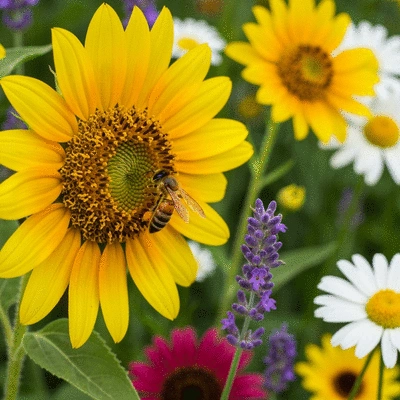
Identifying the Best Plants for Bees in Australia
Australia is home to an incredible variety of native plants that are well-suited for attracting bees. These plants have adapted to local climates and conditions, making them perfect for your bee-friendly garden. As I explored my own options, I found that integrating Australian natives into my apiary not only supports local bee populations but also enhances the beauty of my surroundings.
Top Native Plants to Attract Bees
Some of the best native plants for attracting bees in Australia include:
- Banksia: A stunning plant with dense flower spikes that are irresistible to bees.
- Grevillea: Known for its tubular flowers, Grevillea provides ample nectar for various bee species.
- Bottlebrush: With its bright red flowers, this plant not only looks beautiful but also attracts a multitude of pollinators.
These native plants can make a significant impact on the bee population in your area. They are resilient and well-adapted to Australia’s climate, ensuring a sustainable food source for your bees.
Pollinator-Friendly Seed Mixes and Collections
In addition to individual plants, there are fantastic seed mixes available designed specifically for attracting pollinators. Two notable options include:
- Bee Cause Seeds: A specially curated mix that features a variety of flowering plants to support bee health.
- Diggers Club Seed Mixes: These mixes are rich in native Australian plants and are tailored to provide food sources throughout the year.
Using seed mixes can simplify the process of planting and ensure that you are providing a diverse range of flowers for your bees. Just imagine the buzz of happiness from our bee friends as they discover these new blooms!
Flowering Herbs and Their Benefits for Bees
Don't overlook the benefits of herbs in your bee-friendly garden! Plants like lavender and basil are not only useful in the kitchen but also serve as excellent sources of nectar for bees. When these herbs bloom, they attract various pollinators, enriching your garden's biodiversity.
- Lavender: This fragrant herb is a bee magnet, providing ample nectar and a delightful scent.
- Basil: Not only does it enhance your culinary dishes, but it also offers a food source for bees.
Integrating flowering herbs into your garden can create a multi-functional space that benefits both you and the bees. Who doesn’t love the idea of a buzzing garden filled with delicious scents and flavors?
Pro Tip
Consider planting a mix of flowering herbs alongside your native plants. Herbs like thyme and rosemary not only attract bees but also provide culinary benefits for you. Their blooms offer a rich nectar source, ensuring your garden is both functional and bee-friendly!
Supporting Your Bees with Certification Programs
As a passionate advocate for honey bees and sustainable practices, I can’t emphasize enough the value of certification programs like Bee Friendly Farming®. These initiatives play a crucial role in promoting sustainable agricultural practices that benefit both bees and our environment. By adhering to specific standards, farms can ensure that their practices support bee health and biodiversity, which ultimately leads to healthier ecosystems.
When you choose to support certified farms, you’re not just making a purchase; you're investing in a movement that prioritizes the well-being of our vital pollinators. It’s a way to contribute to a larger cause while enjoying the delicious products that bees help create!
Understanding Bee Friendly Farming® Certification
The Bee Friendly Farming® certification is an initiative designed to support farmers who make a conscious effort to create bee-friendly environments. This program encourages the use of sustainable farming practices, including reduced pesticide use, the planting of pollinator-friendly crops, and the preservation of natural habitats. Participating farms undergo periodic evaluations to ensure they meet the necessary standards.
- Supports sustainable agricultural practices
- Promotes biodiversity and native plant growth
- Helps protect honey bee populations
- Encourages responsible pesticide use
By supporting farms with this certification, you help foster practices that are essential for sustaining our bee populations, which are crucial for pollination and the overall health of our food systems.
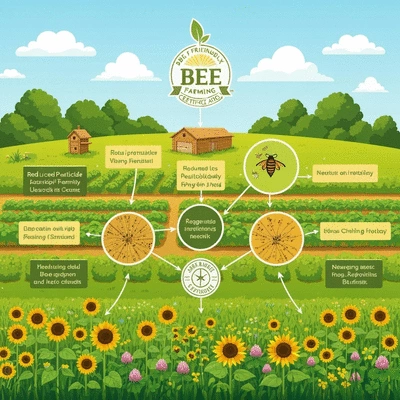
Engaging with Community and Educational Resources
Connecting with others who share a passion for bees can be incredibly rewarding! One of the best ways to deepen your knowledge about bee-friendly gardening is to participate in local community workshops. These events often feature expert speakers and hands-on activities that can enhance your understanding of sustainable practices.
Local Gardening Workshops and Their Benefits
Local gardening workshops offer fantastic opportunities for aspiring beekeepers and gardeners alike. These workshops can cover various topics, from understanding the needs of bees to hands-on planting techniques. Here are some benefits you might experience:
- Learn directly from experts in beekeeping and gardening
- Network with fellow enthusiasts and share experiences
- Receive practical advice tailored to your local environment
- Discover resources and materials to enhance your gardening
If you haven’t attended a local workshop yet, I highly encourage you to seek them out. It’s a wonderful way to grow your knowledge while building connections within the beekeeping community!
Joining Beekeeping Associations and Regional Gardening Clubs
Another excellent way to enhance your understanding of beekeeping is by joining local beekeeping associations and gardening clubs. These organizations often offer a wealth of resources and networking opportunities, allowing you to connect with seasoned beekeepers and fellow gardening enthusiasts. For more insights on how to get started, consider exploring our guide on getting started with beekeeping.
- Access to workshops and educational events
- Opportunities to share experiences and best practices
- Support and mentorship from experienced beekeepers
- Information on local flora that benefits bee populations
By becoming a part of these communities, you not only gain valuable knowledge but also contribute to a collective effort towards bee conservation and sustainable practices.
Frequently Asked Questions (FAQs) About Bee-Friendly Gardens
Q: What are the key characteristics of a bee-friendly plant?
A: Bee-friendly plants typically have brightly colored flowers with open access to nectar and pollen. They also often bloom at different times throughout the growing season to provide continuous food sources and are preferably native to the local ecosystem.
Q: Why are native plants more beneficial for bees than exotic species?
A: Native plants have co-evolved with local bee species, meaning they provide the specific type of nectar and pollen that local bees are accustomed to and need for optimal health. They are also adapted to the local climate and conditions, making them more resilient.
Q: What are some top native Australian plants that attract bees?
A: Some of the best native Australian plants for attracting bees include Banksia (dense flower spikes), Grevillea (tubular flowers), and Bottlebrush (bright red flowers). These plants provide ample nectar and pollen for various bee species.
Q: How can seed mixes help create a diverse bee-friendly garden?
A: Pollinator-friendly seed mixes, such as Bee Cause Seeds or Diggers Club Seed Mixes, simplify the process of planting a variety of flowers. They are curated to include diverse species that bloom at different times, ensuring a continuous food source and a rich habitat for bees.
Q: What is Bee Friendly Farming® certification and why is it important?
A: Bee Friendly Farming® certification is a program that encourages sustainable agricultural practices beneficial for bees. It promotes reduced pesticide use, planting pollinator-friendly crops, and preserving natural habitats. Supporting certified farms helps sustain bee populations and promotes healthier ecosystems.
Recap of Key Points
Here is a quick recap of the important points discussed in the article:
- Incorporate a variety of native plants to support different pollinators and enhance biodiversity.
- Choose bee-friendly seeds and plants to provide essential nutrients and habitats for local bee populations.
- Select plants with brightly colored flowers and open nectar access to attract bees effectively.
- Utilize native Australian plants like Banksia, Grevillea, and Bottlebrush to attract local bee species.
- Consider using pollinator-friendly seed mixes to ensure a diverse range of flowering plants throughout the year.
- Integrate flowering herbs such as lavender and basil for additional nectar sources while enjoying culinary benefits.
- Support sustainable practices through certification programs like Bee Friendly Farming® to promote healthy ecosystems.
- Engage with local community workshops and gardening clubs to deepen knowledge and share best practices.
